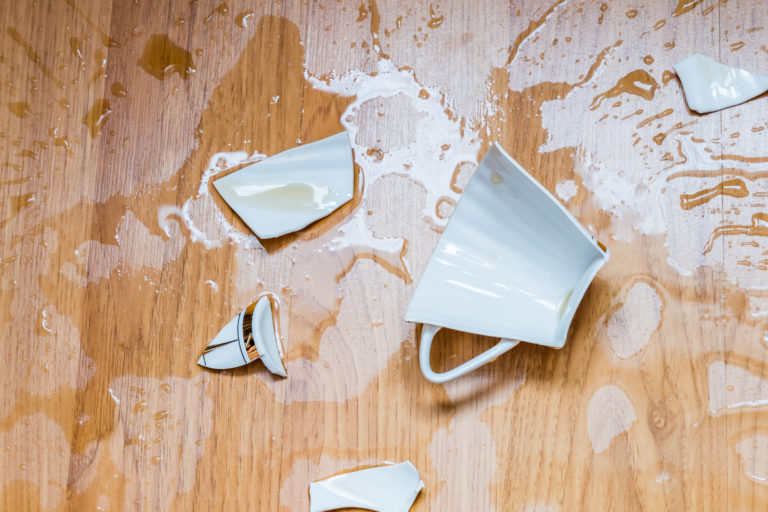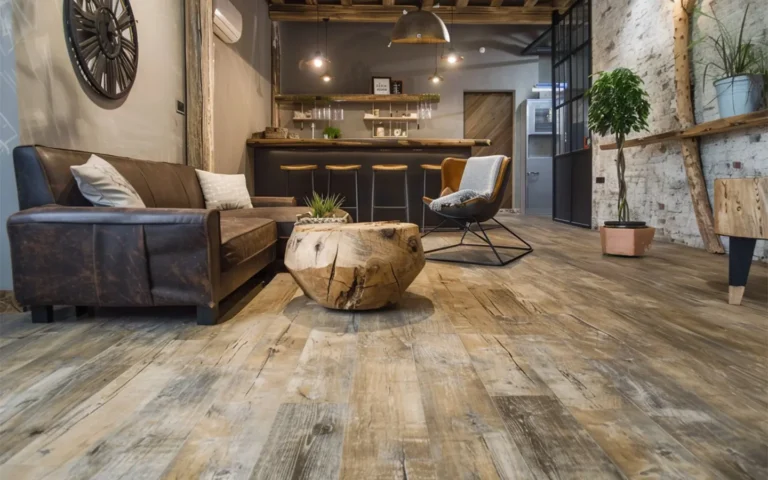This post may contain references or links to products from one or more partners of our parent company and/or subsidiaries of our parent company. For more information, visit this page.
Updated February 4, 2022
On the hunt for low-VOC carpet? We hear you!
It may not be the most popular flooring option these days, but there’s no denying that carpets are the height of comfort. They make us feel warm and snug, especially when the weather is cold.
And of course, whether you’re deciding between different types of wood flooring or different types of carpet, product safety always tops the priority list. Sure, you want your home to be beautiful, but sacrificing your family’s health for style won’t exactly win you Homemaker of the Year!
But don’t panic! It’s possible to have both beauty and safety! That’s why we’re here to walk you through everything you need to know about low-VOC carpet. Below, you’ll learn about the ins and outs of eco-friendly flooring, the types of carpet you should avoid, the low-VOC carpets you should look for, the brands will provide you with peace of mind when it comes to health and safety, and so much more.
Let’s jump in!
👉PS: to skip straight to the low-VOC brands list, click here.
First of All: What are VOCs?
VOC stands for “Volatile Organic Compound”. Ewww, “volatile”? Sounds harsh, you’re thinking. And you’re right, they can be just as bad as they sound.
VOCs are a group of carbon chemicals that are emitted as gasses by many man-made products and construction materials. VOCs can have dire effects on health—causing headaches, nausea, allergies, difficulty breathing, and a slew of other really attractive side effects. In the most extreme cases, they can affect your organs, hormones, or even cause cancer. That new-car smell? VOCs. Tragic, we know!
And unfortunately, many types of flooring contain VOCs. Perhaps unsurprisingly, many of the best types of vinyl flooring can emit VOCs if you don’t purchase green products. But even natural flooring materials like hardwood aren’t guaranteed to be non-toxic. Why?
Wood finishes can contain VOCs, and the glue used to install solid wood floors often can too. And if you’ve looked into the disadvantages of engineered wood, you’ll know that the adhesive used in the construction of even the best engineered wood flooring can contain VOCs as well.
How Long Do VOCs Last?
VOCs can hang around in the air anywhere from a few days, to a month, to a few years! This is a phenomenon known as “off-gassing”. New mattresses are famous for this—but flooring can do it too.
When you’re installing new flooring, it helps to compare various materials against each other in terms of toxicity levels.
For example, if you’re trying to figure out what to use in a room that’s going to be used by children or other vulnerable groups, low-VOC carpet might be your first choice—but you might also want to compare the pros and cons of tile vs. laminate, for instance. Many types of tile are naturally low in VOCs, whereas completely non-toxic laminate flooring and low-VOC carpet are a bit harder to come by. Likewise, fake wood flooring products like vinyl plank might be durable, but their VOC levels can vary widely.
What Chemicals Should You Avoid?
Older carpets are generally not low-VOC carpets, and they can be notorious for their toxic components. These surfaces are generally made with phthalates and some common chemicals known as “endocrine disruptors”. Not a phrase that inspires good images. However, keep in mind that older carpets have gotten years of off-gassing out of the way already, so they are less dangerous than when they were first installed.
Some modern carpets, unfortunately, are still ready to release a whole lot of toxins. They can contain styrene and 4-PC, both of which can lead to cancer. And hold onto your seats for this: many carpets may also contain formaldehyde. Yep, that’s not great.
Other chemicals to watch out for if you’re looking for low-VOC carpet include various flame retardants, waterproofing, and stain treatments. All of these are a class of PFCs, which are, you guessed it, not great. PFCs, or perfluorochemicals, are sometimes used as protective coatings in products ranging from clothing to cookware to flooring.
Does All Carpet Have VOCs?
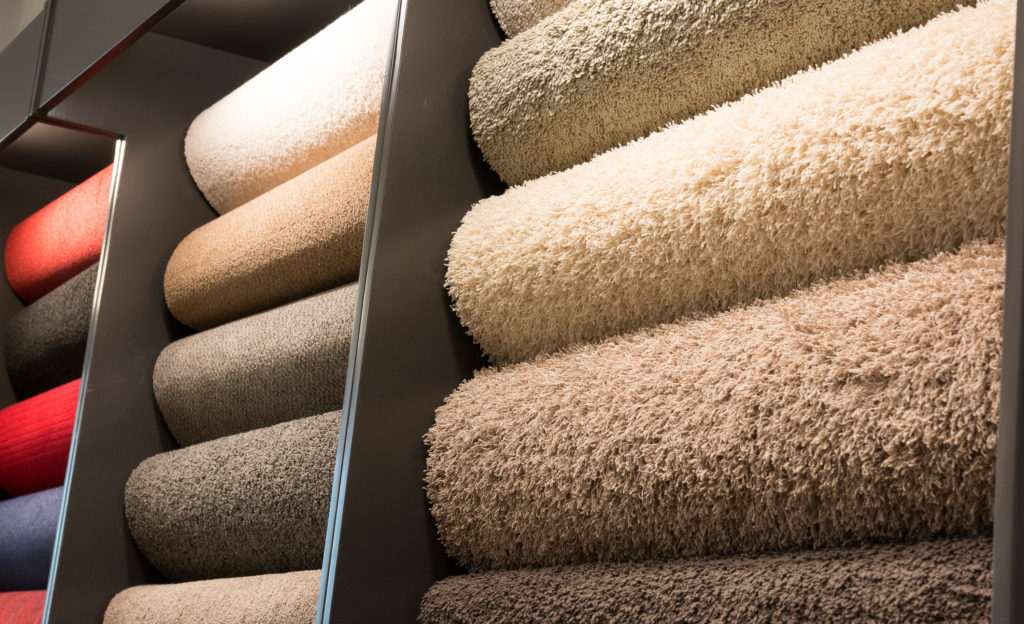
We know this stuff sounds nerve-wracking (with good reason) but remember: many products contain VOCs. Translation: it’s less about finding totally non-toxic carpets than it is about finding low-VOC carpets.
So to answer your question, no—not all carpets contain VOCs, but many do. Unfortunately, carpeting can be full of industrial materials, including chemical additives. Dyes, fiber treatments, adhesives, and carpet padding can all contain less than desirable components.
However: the fact is, there are lots of low-VOC carpet choices you can choose from, from a number of different brands. We’ll get into those below.
Best Brands of 2024
Low-VOC Carpet vs. Other Flooring Materials
Of course, as we said before, it may be worth researching options outside of carpet for your flooring needs. Compare carpet vs. laminate, which (like we mentioned) can be found in relatively non-toxic versions. And if you are leaning toward carpet because you need scratch-resistant flooring, know that there are other options out there that will not get torn up easily.
However, there is no shame at all if carpet is still appealing to you! It can be super cozy and comforting. Know that there are safe options for having eco-friendly carpet.
Can You Get VOCs Out of Carpet?
At this point, you may be reconsidering whether you want carpet or hardwood in your bedroom. Just remember: VOCs do not necessarily need to be a deal-breaker!
According to the EPA, you can significantly reduce VOCs in carpet using a vacuum with a HEPA filter and hot water extraction. Some cleaning products will claim to take care of toxic chemicals, but that’s an uncertain route. Time is generally your best remedy for eliminating toxins.
If you’re unsure about whether you can purchase a low-VOC carpet or not, it’s probably a good idea to simply rethink your strategy. Not only for your health, but also because carpeting can be downright weird in some rooms.
For example, have you ever seen carpet used as sunroom flooring or mudroom flooring? Oof. And don’t get us started on bathrooms! Wood floor bathrooms might be difficult to pull off, but they’re so much better than carpeted bathrooms (just…gross).
What Is Considered a Low-VOC Carpet?
When it comes down to it, there’s no standard definition of what makes a “low-VOC carpet”. But, there are several qualities you can look for in order to get the least toxic carpet possible.
Several brands produce carpets with low VOC emissions, and there are even several companies that are solely in the business of eco-friendly flooring. We’d recommend purchasing one of these and we’ll list them out further down.
When shopping around for new carpet, your best bets for material will most likely be made of untreated fiber (like wool) that’s undyed and contains zero additives. And any adhesive used in installation should also be low-VOC; natural latex is always a good choice. Again, we’ll list these out below.
There are also several low-VOC carpet certifications that can help you make a good choice with your non-toxic flooring. We’ll talk about these (you guessed it) a little bit later!
Qualities to Look for in Low-VOC Carpet:
Here we are: the main event. This is what you should look for when you’re shopping for low-VOC carpets.
Look For the Best Low-VOC Carpet Materials
There is no denying that environmentally friendly natural materials are your best bet for low-VOC carpet. And we know what you’re thinking: “natural materials aren’t durable”! Think again, friend.
High-quality natural carpets can give even the most durable wood flooring a run for its money when it comes to longevity. That being said, not all of the best low-VOC carpets have natural fibers, and this list may surprise you!
Wool is a Naturally Low-VOC Carpet Choice
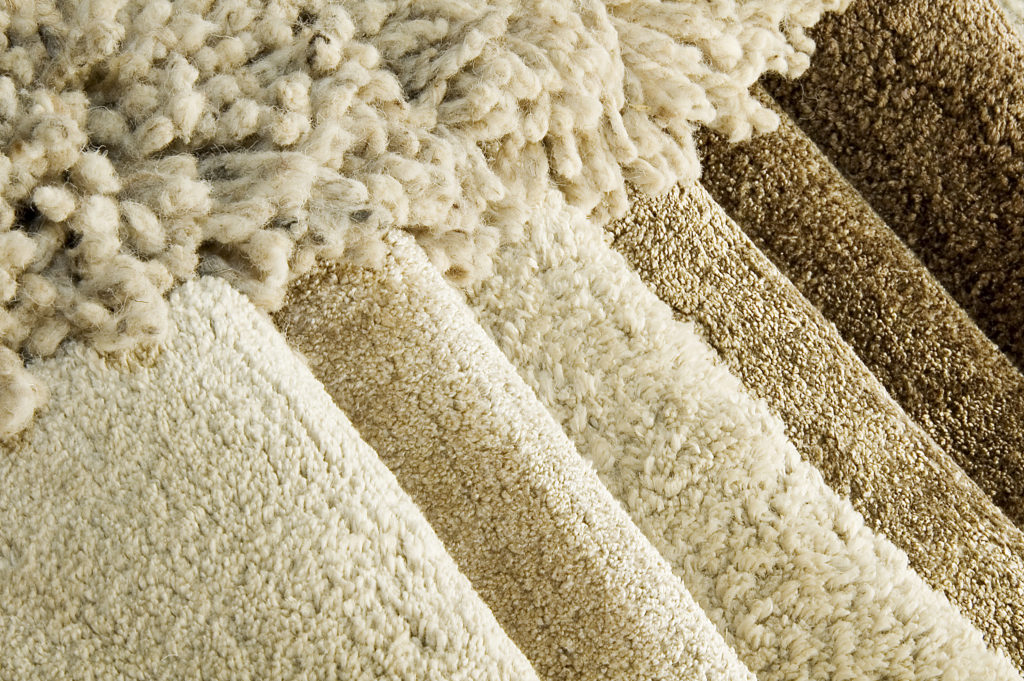
It’s not just for sweaters anymore! Sheep’s wool is about as natural as it gets. You don’t even need to worry about dangers from dyes—wool carpets can be left completely natural and still look amazing.
Jute is Tough and Biodegradable
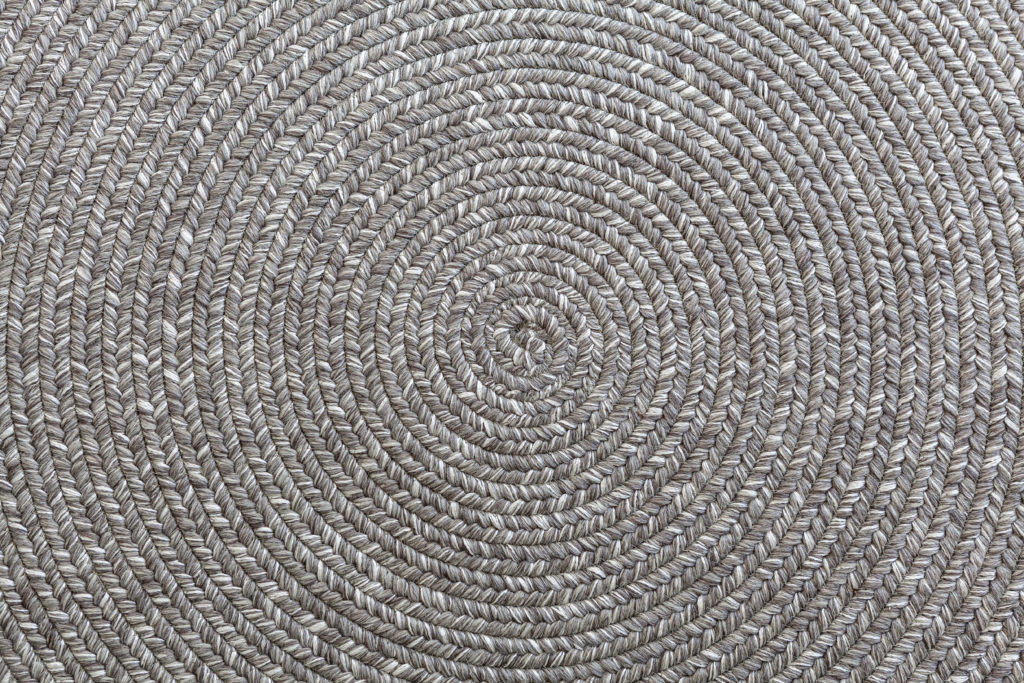
Not all carpeting is biodegradable, but jute is! This fiber is concocted from the jute plant found in China and India. You will mostly find these carpets braided, as the material is coarse. They’re still lovely (and comfy) though!
Seagrass is Easy to Care For (and Feels Great)
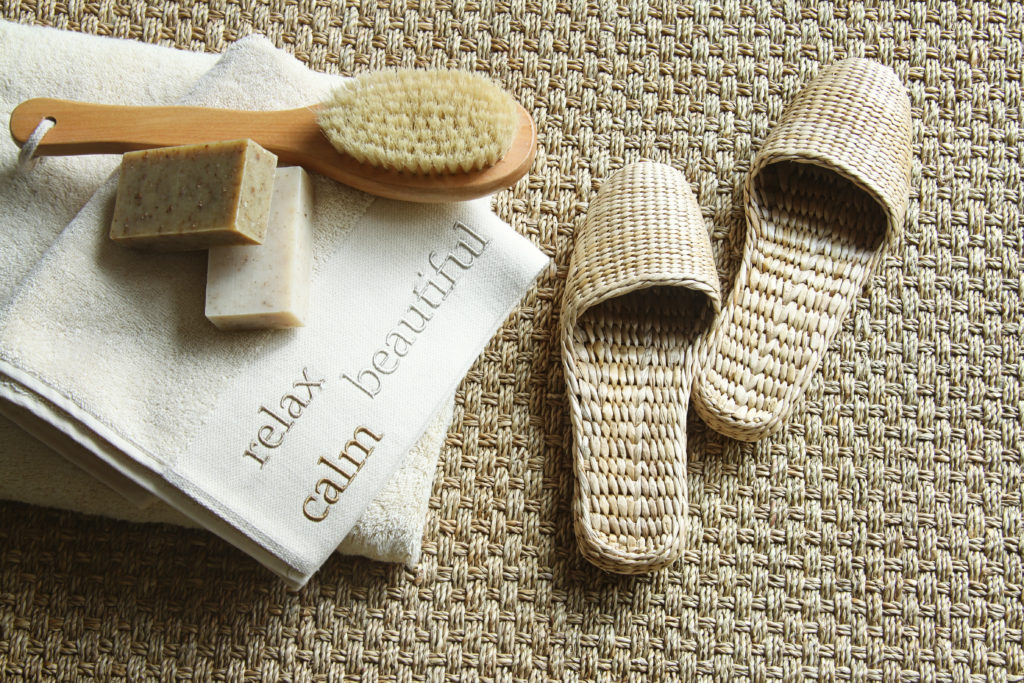
Yes, you can actually have a bit of the ocean right under your own feet. And it feels surprisingly nice! Seagrass is an easy-to-care-for material; just don’t get it wet! (Seriously. We know—who would have seen that one coming?)
Sisal is Great for People With Allergies
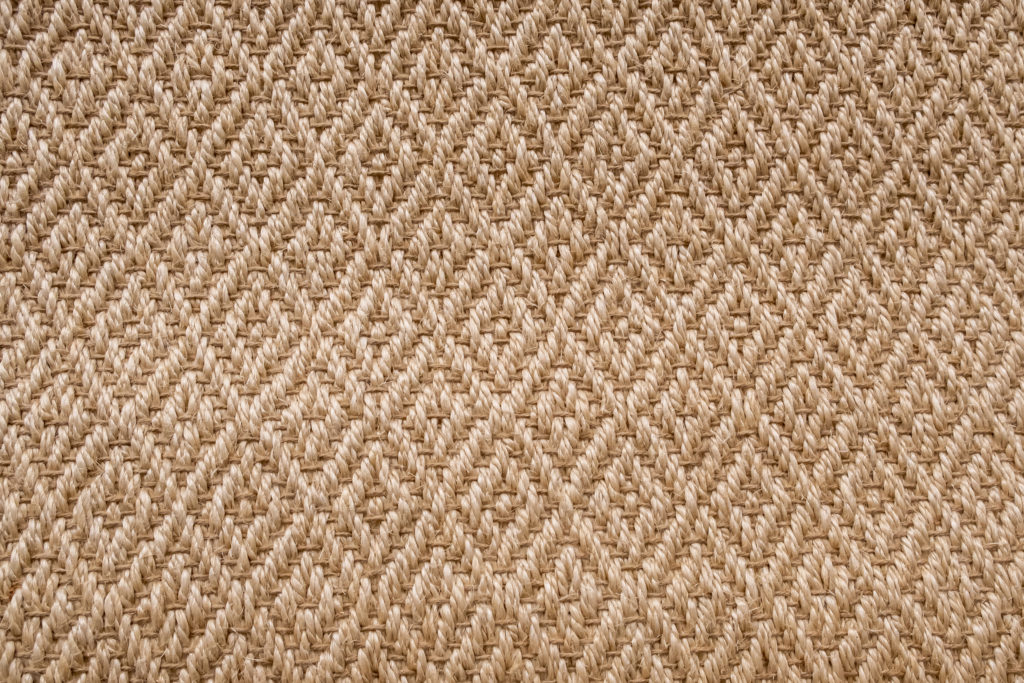
Extracted from the agave plant, sisal is a very heavy-duty material—yet it can be woven into a relatively soft carpet. But that hardness comes with a huge benefit: it resists most stains! And bonus: it also resists dust and allergens. If someone in your family suffers from allergies, sisal is a great low-VOC carpet choice.
Cotton is a Lovely and Soft Low-VOC Carpet
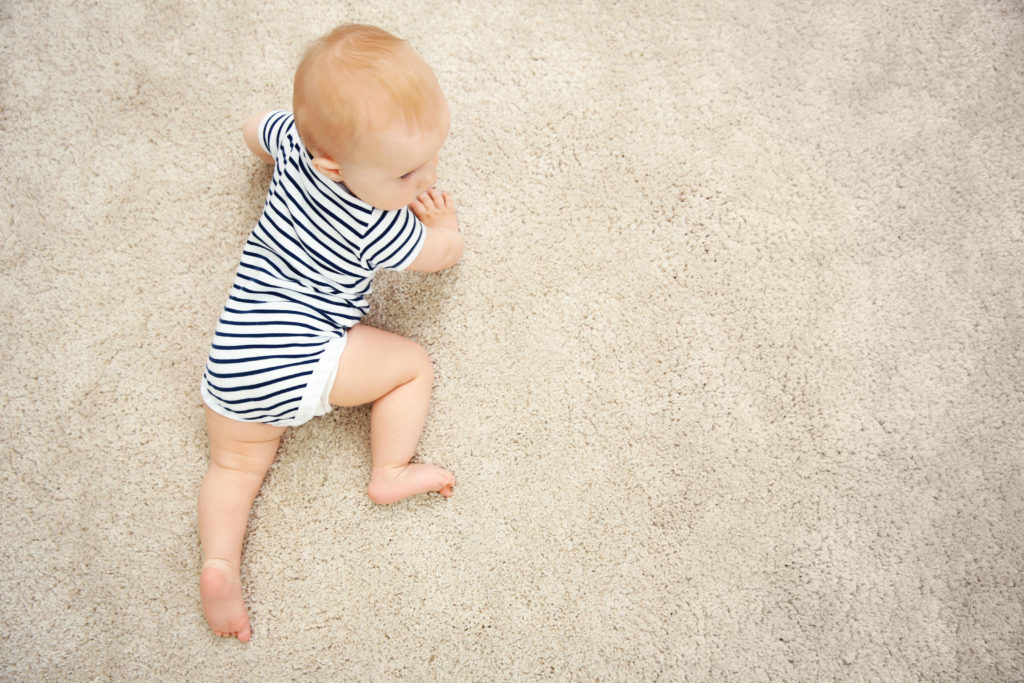
Cotton used to be a very common material for carpets but has since declined in popularity. That said, it boasts a very pleasing foot feel given that it’s soft and warm. Cotton carpet generally wears well with time, though it shouldn’t be placed in high-traffic areas. Too much love can make this fiber wear down quickly.
Nylon is Synthetic but Super Durable
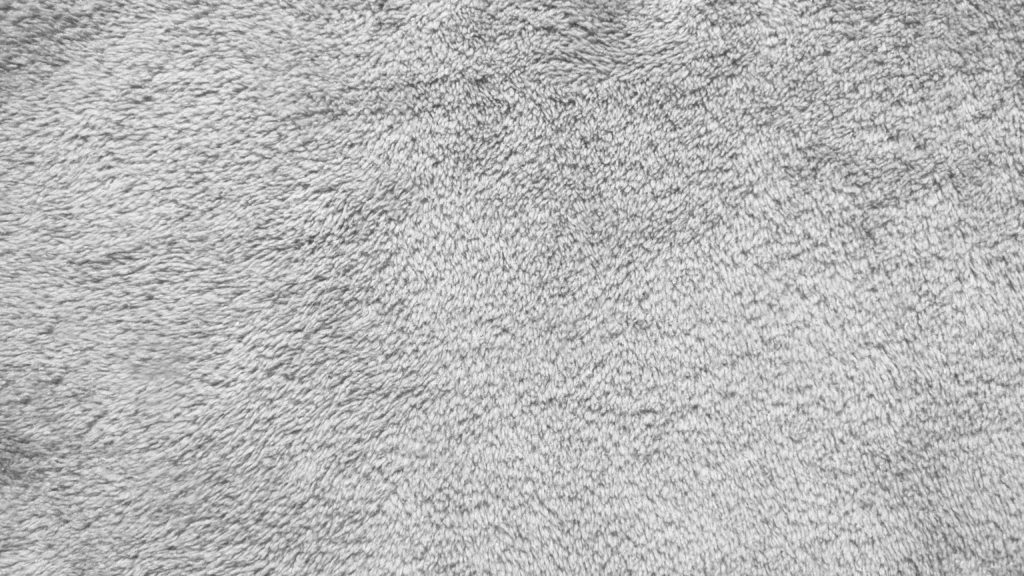
Remember when we said that not all low-VOC carpet fibers were all-natural? Well, nylon is the amazing patient zero of these non-natural but non-toxic fibers!
Because it’s highly durable and stain-resistant, nylon doesn’t always have to be treated with harsh chemicals to make it a durable surface (those chemicals can leech VOCs). And while it is synthetic, nylon carpet can be made in a manner that reduces its toxic elements to trace levels at most. Yahtzee!
PET Polyester is Made from Recycled Materials
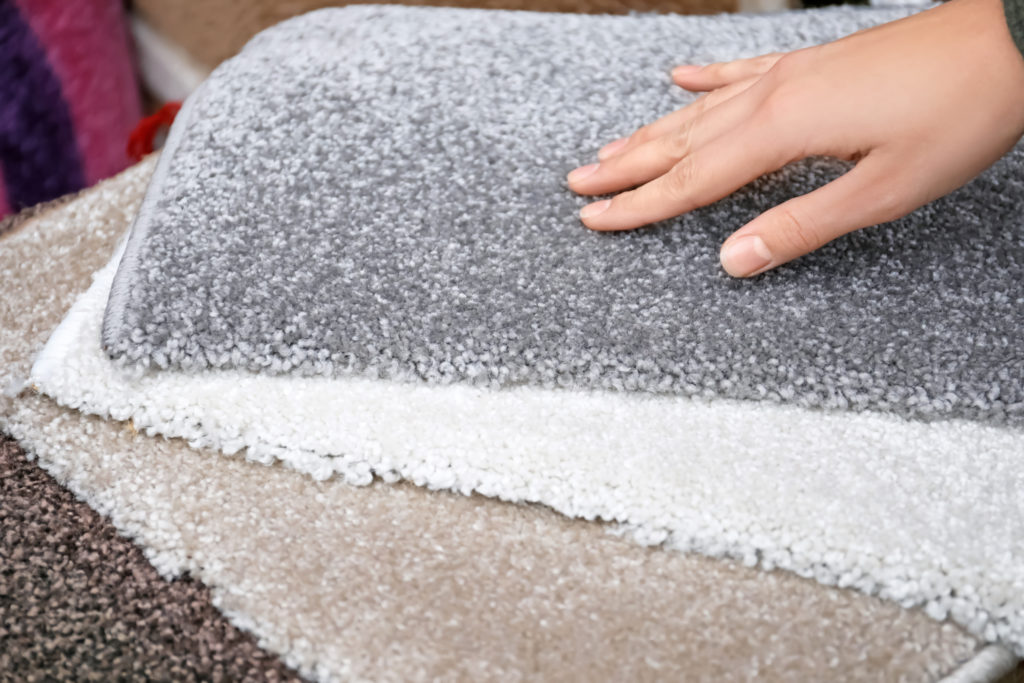
Speaking of recycling, how would you like a rug made from recycled materials? Recycled plastic containers and water bottles can find new life literally under your feet with PET carpeting! It’s a shockingly soft material, and not-so-shockingly durable. When it comes to sustainable flooring, you really can’t do better than a material literally made from recycling.
Look for Low-VOC Carpet Certifications
There are a few third-party certifications that you can look into to ensure you’re getting the most environmentally friendly carpet possible. Here are the top choices:
CRI Green Label Plus
The Green Label Plus program is a certification that ensures your carpet purchase will be low in VOC off-gassing. The program is administered by the Carpet and Rug Institute (CRI) Indoor Air Quality Program, which vigorously tests products for their VOC emissions before awarding them this coveted certification.
The Carpet and Rug Institute (CRI) is an industry source for information on the environmental standards of carpet and rugs. In other words, they know what they are talking about! Look on the label of any low-VOC carpet you’re thinking about purchasing. If it has an icon of a small greenhouse, it’s Green Label Plus-certified.
GreenGuard
GreenGuard is another certification for products that meet or exceed standards for indoor air quality. A seal of approval here is another sign that you’ve chosen an eco-friendly carpet.
The GreenGuard certification is administered Underwriter Laboratories, a consumer protection company that’s been around for over a century. And they don’t just certify carpet—whether you’re looking for hardwood floor alternatives, the best wood flooring for dogs, heck, even pine flooring, you’ll find that GreenGuard is the gold standard in non-toxic certifications. They hold all the best carpet brands, the best hardwood floor brands, and the best fake wood flooring brands accountable.
If you ask us, that’s the kind of oversight we want when it comes to keeping our families safe.
GreenGuard Gold
And if you’re into getting really, really low-VOC carpet, look into the GreenGuard Gold certification program. Products awarded this coveted certification have to meet even higher standards of environmental friendliness and low toxicity.
Look for Low-VOC Carpet Brands and Products
When your carpet and padding have lower VOC emissions, everybody wins. The best way to shop for low-VOC carpeting is to first determine which brands offer the certified green products you seek. Here are some of the top contenders.
Proximity Mills
Proximity Mills exclusively makes carpets out of type 6,6 nylon, which is notably more resilient than any other carpet fiber. Even better, this heightened performance doesn’t sacrifice safety, as all of Proximity Mills soft surfaces are CRI Green Label Plus-certified as low-VOC carpet.
Among their catalog, you’ll find both loop-pile carpets and cut pile carpets, as well as a broad spectrum of colors and textures. Best of all, Proximity Mills carpets are very reasonably priced for type 6,6 nylon—one of the reasons they top our list of the best carpet brands.
Doma
If you want something different in the best way possible, Doma prides itself on making low-VOC carpet that’s as bold as it is stylish. All Doma carpets boast a CRI Green Label Plus low-VOC certification, and are either made entirely of wool or from a wool blend.
Best of all: despite the fascination with high-fashion, Doma wool carpets are reasonably priced at $4.40–$9.75/sq. ft., compared to other brands that sell wool carpet for as much as $26/sq. ft.
Earthweave
Earthweave is one of the first eco-friendly carpet companies. It specializes in 100% all-natural fibers, making wool rugs and padding.
Their BioFloor Wool Carpets line offers a large selection of options, including different colors. The backing is also 100% natural latex, adding yet another eco-friendly component.
Paradiso
Paradiso is a luxury flooring brand that emphasizes timeless designs that are crafted using only the best materials and techniques. All their carpet products are woven—many options, by hand—rather than being tufted and glued. The advantages of woven carpet:
- It’s significantly more long-lasting than many other carpets.
- It eliminates the need for adhesives inside the carpet itself.
In fact, all Paradiso carpet is CRI Green Label Plus-certified as low-VOC. So while Paradiso flooring tends to cost more than your average brand, the commitment to quality is darn-near unparalleled. You’re not paying for a name—you’re paying for quality.
Newton
Newton goes out of its way to offer high-performance floors at an affordable price. All their carpets are CRI Green Label Plus-certified as low-VOC.
While their catalog isn’t as extensive as, say, Proximity Mills or Doma’s, they offer plenty of simple options that will fit in with any decor style. Performance-wise, Newton mostly offers solution-dyed polyester along with a handful of type 6,6 nylon options for as little as $2.20/sq. ft. (which is exceptionally inexpensive for the material).
Nature’s Carpet
This line, manufactured by Colin Campbell and Sons, offers wool and wool blend carpets. They are high quality and come in several styles and colors.
Nature’s Carpet measures its standards on a “green spectrum.” The darker the green is on their rug spectrum, the better it rates for your air quality.
Four Seasons
Unique Carpets offers Four Seasons, an inexpensive option for low-VOC carpeting. It’s mostly natural, though some of the backing is polypropylene. It is considered safe, though not highest on the list in terms of environmental friendliness.
Most of their products are un-dyed wool or jute and are hypoallergenic.
Look for Non-Toxic, Environmentally Friendly Installation Products
Even after you’ve chosen a low-VOC carpet material, a reputable carpet manufacturer, and found a carpet that’s certified non-toxic…you still have to install it! And of course, you still have to be careful about VOCs when you do so. Here’s what you need to consider when it comes to installation products:
Get Low-VOC Carpet Pads
Carpet pads are typically composed of foam scraps. They’re bound together by adhesives, which means (you guessed it)—VOCs. Even if your carpet is completely toxin-free, the padding can still be dangerous. There are, however, some natural padding options.
Untreated wool or felted wool are excellent options. Some carpet, such as Air.O and Homefresh, have felt padding that’s already attached. Synthetic options, such as rubber or synthetic felt, are also out there and can be “low-VOC” on a product-by-product basis.
And Don’t Forget to Use Low-VOC Adhesives
Adhesive is a major VOC culprit. During installation, it’s slathered all over the back of the carpet—so there really is no escaping any toxic fumes. For a completely safe carpet, you must be sure your adhesive is low in toxins, or else all this has been for naught!
An ideal solution? Avoid adhesive completely and seek another route for laying down your carpet, such as stapling it to the subfloor (and if you’re wondering what subflooring is, it’s just the surface below your finished floor).
If Low-VOC Carpeting Isn’t for You, Consider Carpet (or Cork) Tiles!
We know, we know—we’ve thrown a lot at you and made things sound (despite our best efforts) super scary. But they don’t have to be! Low-VOC carpet is totally doable.
But: if, after reading this, you’ve decided that maybe the cost to install engineered hardwood floors worth not having to deal with toxic carpets, or that maybe hemp flooring is the eco-friendly choice for you, or maybe that you’d rather save some money by going with DIY wood floor installation rather than non-toxic carpet installation…well, we would blame you either. It’s all about preferences!
Just know that you can get the benefits of low-VOC carpeting—warm underfoot feel, safety for kids, etc.—without installing wall-to-wall carpets.
Peel-and-Stick Carpet Tiles
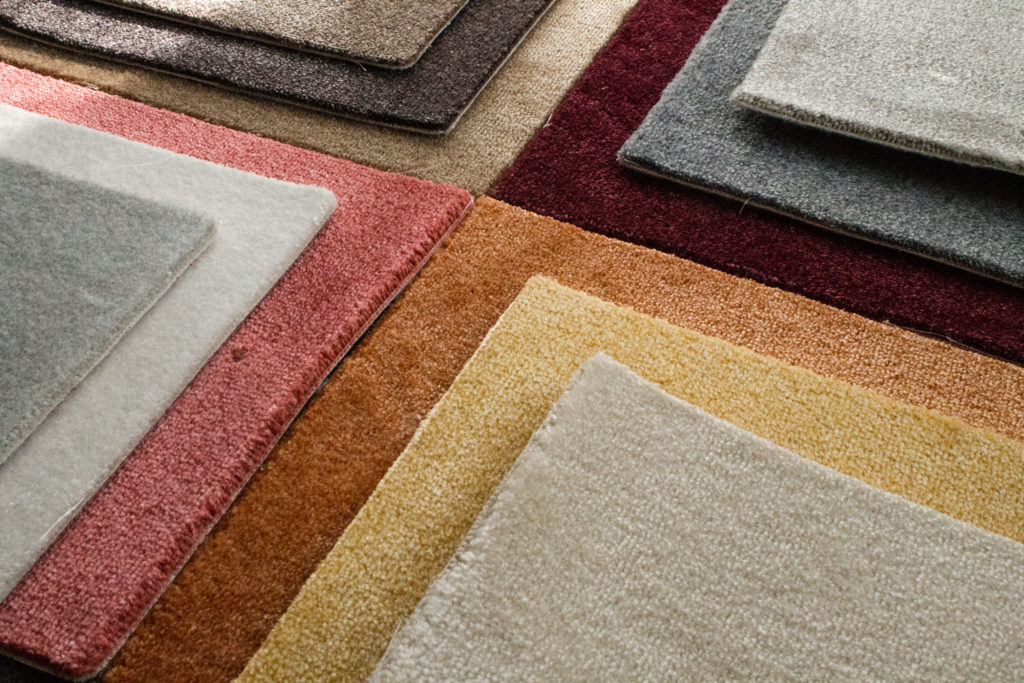
Did you know that you can put your own carpet or area rug together? Seriously—peel-and-stick carpet tiles are the hot new thing, they’re one of the easiest types of flooring to install, and they’re often made from non-toxic recycled nylon.
Carpet tiles are an eco-friendly option because they off-gas more quickly than traditional carpet. Plus, you install them yourself—no glue or VOC adhesives involved! To make them an even healthier option, they can be removed for easy cleaning.
If the idea of laying your own carpet tiles intimidates you, just know that they are not difficult at all. They’re way, way, way easier to put in than other DIY surfaces like snap-together tile flooring or floating wood floors (one of the disadvantages of floating floors: you actually have to know what you’re doing from an installation perspective or you’ll mess ‘em up).
Plus, you can mix and match your carpet tiles however you want. Thinking about a cozier version of gorgeous wood floor patterns like herringbone parquet? Totally doable. Sign us up!
And Cork Tiles Are a Fantastic Low-VOC Carpet Alternative
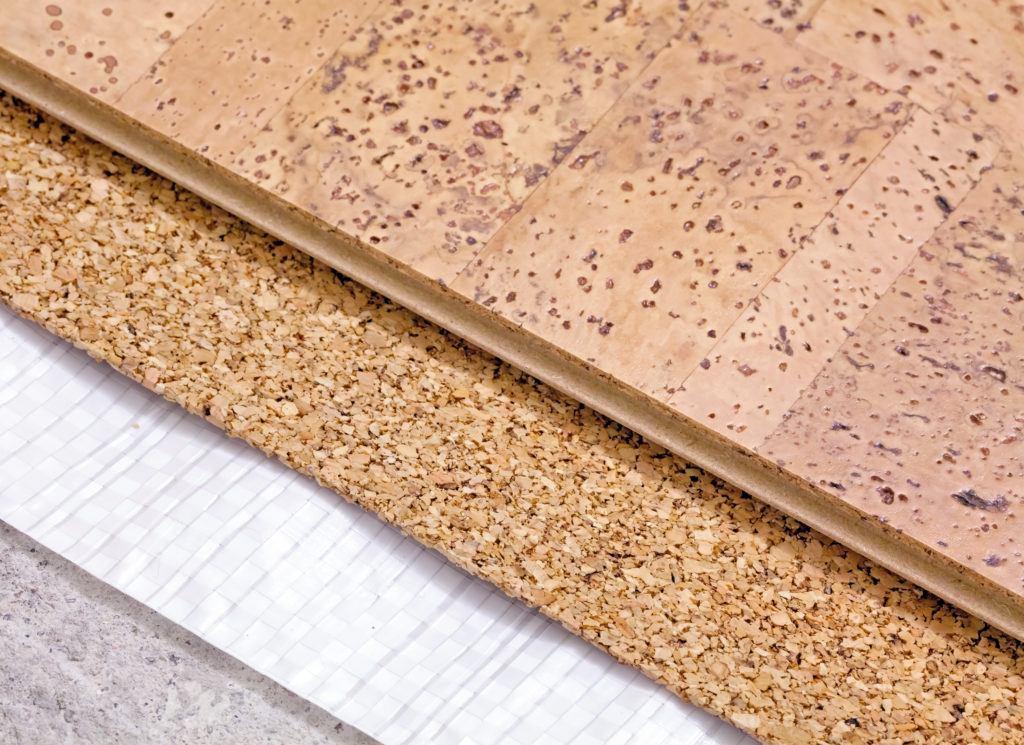
Cork? And cork tiles at that? We’re serious! Cork tiles are little off the beaten path, to be sure, but certainly worth looking into. Similar to carpet, cork is thick and warm. It keeps your feet insulated (like carpet) it’s sound-dampening (like carpet), it’s good for kids and those with joint issues (like carpet)…basically, it’s a great alternative to carpet!
There are some disadvantages to cork flooring, but they’re few and far between. And if you opt for a natural product, cork can be super eco-friendly and low in VOCs. Win-win-win!
Finding the Best Environmentally Friendly Carpet is Super Doable with a Bit of Research!
Carpeting does not have to be high risk. Before you go ripping up your current flooring or scrapping your plans to re-carpet, do some research. Sure, you could consider hardwood flooring instead, but it may not be worth the cost to replace carpet with hardwood. Or maybe you need something way more water-resistant, like teak flooring. Who knows? At the end of the day, it’s all about doing your research!
Final Thoughts on Low-VOC Carpet
A couple of final thoughts on purchasing low-VOC carpet.
First off: many carpet suppliers will gladly unroll your carpet for you in their warehouse for two or three days prior to delivery. Depending on the product, this can get most of the off-gassing done outside of your home. If you’ve purchased a Green Label Plus-certified carpet, you’ll definitely be able to have this done—agreeing to do so for buyers is part of the GLP certification process.
Finally, when it comes to finding your ideal carpet supplier, we can not stress this enough: buy your floors from an independent flooring store near you—not from a box store. Flooring stores employ flooring experts, who know exactly what’s in every product they sell. Box store clerks…not so much.
Anyway, we hope we’ve made good on our promise to show you everything there is to know about buying low-VOC carpets. They’re a little more difficult to source than your run-of-the-mill products (pun intended) but in the long run, we can’t recommend them enough!
And for more information on all things flooring, check out:
- Engineered Bamboo Flooring: Pros and Cons
- Pergo Reviews 2020: What Buyers are Saying
- Choosing Wood Floor Colors: The 2020 Guide
- Water-Resistant Wood Flooring 101
- Advantages & Disadvantages of Hickory vs. Oak Flooring
- Douglas Fir Flooring: Is it Right for You?
- Ebony Flooring and Ebony-Stained Wood 101
- Your Definitive Guide to Ash Flooring
About The Author

Courtney Daily
October 9, 2020
Courtney is a freelance writer who wears many other hats: kindergarten teacher by day, Broadway diva in the shower. She is a transplant Hoosier who originated in New England. When she isn't writing in her spare time, you will find her reading history books, arguing with her latest knitting project, or being beaten by her kids at most games.

